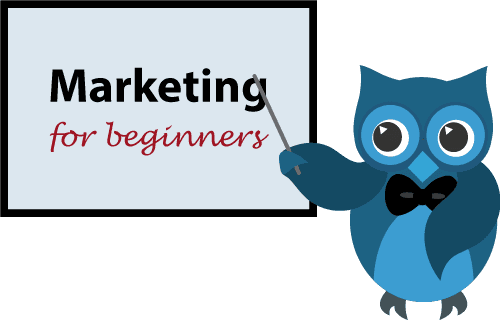
Learn the Basics of Marketing and Start Selling More Digital Products Today
2021 Edition
In this blog post we'll have a look at the basics of how to market your product. The main thing to remember though is to go for it: seriously. You're not a snake oil salesman set on alienating friends and strangers. You're making people aware of a product or service that they really want, but just hadn't heard about – until now.
Generate buzz
If you launch your product 'cold' - that is, without any buzz – then it will be a bit more of an uphill struggle for you to get people interested. Instead, even when you are still working on your book, or video game, or set of crochet patterns, start building your community. You don't even need to mention your product or service – just position yourself as someone who is interested and enthusiastic about an area connected to your product, and willing to talk about it in an accessible way. So if you are planning on writing an amusing book about your dog (like Marley and Me) get involved with one of the breed forums online and start writing snippets about your dog's life. You'll soon get a following if you are entertaining and enthusiastic about what you (or your dog!) does.
Build a community
Guess what? You probably already have a community. If you're a fitness guru and are launching a book aimed at this demographic then you're in touch with potential customers on a weekly basis, whether you are at the gym, contributing to a fitness forum, Facebook group, industry website, LinkedIn network for professional trainers, or taking part in a club event. All you need to do is expand this network in a strategic manner. Get talking to more people at the gym and follow them on social meda. Contribute some discussion posts on Facebook or use it to sound out a few ideas. See what the potential is for advertising at your local cycling or running club. Don't feel that you 'just' have to build a community online. Giving talks is a great way to grow interest in what you're doing and to position yourself as the 'go to' person on a particular subject. The most important thing at an early stage though is to go and meet your customers on their own ground, whether that is at crochet meetups, on Twitter or Hacker News, or at a conference. It's much harder to get them to come to you.
In this blog post we'll have a look at the basics of how to market your product. The main thing to remember though is to go for it: seriously. You're not a snake oil salesman set on alienating friends and strangers. You're making people aware of a product or service that they really want, but just hadn't heard about – until now.
Generate buzz
If you launch your product 'cold' - that is, without any buzz – then it will be a bit more of an uphill struggle for you to get people interested. Instead, even when you are still working on your book, or video game, or set of crochet patterns, start building your community. You don't even need to mention your product or service – just position yourself as someone who is interested and enthusiastic about an area connected to your product, and willing to talk about it in an accessible way. So if you are planning on writing an amusing book about your dog (like Marley and Me) get involved with one of the breed forums online and start writing snippets about your dog's life. You'll soon get a following if you are entertaining and enthusiastic about what you (or your dog!) does.
Build a community
Guess what? You probably already have a community. If you're a fitness guru and are launching a book aimed at this demographic then you're in touch with potential customers on a weekly basis, whether you are at the gym, contributing to a fitness forum, Facebook group, industry website, LinkedIn network for professional trainers, or taking part in a club event. All you need to do is expand this network in a strategic manner. Get talking to more people at the gym and follow them on social meda. Contribute some discussion posts on Facebook or use it to sound out a few ideas. See what the potential is for advertising at your local cycling or running club. Don't feel that you 'just' have to build a community online. Giving talks is a great way to grow interest in what you're doing and to position yourself as the 'go to' person on a particular subject. The most important thing at an early stage though is to go and meet your customers on their own ground, whether that is at crochet meetups, on Twitter or Hacker News, or at a conference. It's much harder to get them to come to you.
Create a compelling brand
You can start selling with just a Facebook page. However, a website gives you greater reach and with options like WordPress, SquareSpace, Wix and Weebly around you no longer absolutely have to employ a design agency (or your overworked techhie brother or sister) to help you out. Consider at this stage investing in good design and copy – you'll feel heartbroken if you manage to get people to your website only for them to bounce off because it is not user friendly, the copy is confusing or it looks terrible on mobile. To get a better idea about why user-friendly design and carefully crafted web copy are important you could dip into: Don't Make Me Think by Steve Krug and Letting Go of the Words by Janice (Ginny) Redish.
Get people's emails
If you want to do a 'hot' launch then the dream is to have an email list of people interested in your product before you even ship your product. Then you can fire off an email and – kerching! – you get some sales. One way to reach this launch nirvana is to offer people something in exchange for their email as you build up to your launch. Perhaps you can give away a sample chapter of your book or a special effect, or even offer people a chance to have a character in a video game named after them?
Talk to your customers
Take every opportunity in the early stages – or at any stage really – to chat to customers to see what they like about your product, what they don't and what they think of your marketing tactics. It's easy to assume that you know what customers need – but you could be wrong. For a start, you are too involved with your product (what do you mean it's not easy to use? You just select this and do that and then this and...). And sometimes people just surprise you. If you make yourself available and easy to contact you'll also create good will – and your customers will be more likely to hang on in there if you have any teething issues with your product.
Don’t forget low-effort marketing activities
As soon as you think about ‘marketing’ certain strategies come to mind: perhaps Facebook advertising, SEO, content marketing and social media buzz. However, don’t forget low-effort marketing activities as well! Features such as one-click upsells can make you more money without any additional marketing spend. On average, SendOwl sellers make between 4-20% more revenue from one-click upsells (here's the data post). These work because once people are in your sales funnel they are psychologically prepared to spend money. So they are more likely to say ‘yes’ when you ask them if they’d rather have a more expensive item or another one as well. Discounts and pay what you want pricing can also be effective marketing techniques that require little in the way of marketing spend.
Chance your arm
Why not contact journalists, bloggers or influential tweeters in your field? You never know. I worked with one self-published author whose book was quite unexpectedly picked up by a national newspaper. Guerilla tactics can also work, if you have the right attitude to carry them off.
Start selling
Good luck with selling your products! And if you’d like more information on selling digital products we’ve written these articles to help:

Matt Wells is the Head of Operations at SendOwl, a digital product delivery and access solutions for creators, solopreneurs and SMBs. An accomplished entrepreneur and technologist, he has founded multiple companies, including Virtual Value and Shujinko. Throughout Matt's career, he has built and led high-performing teams that consistently deliver world-class software solutions. With deep expertise in cloud engineering, infrastructure, and security, Matt has held impactful roles at Starbucks, CARDFREE.
community

